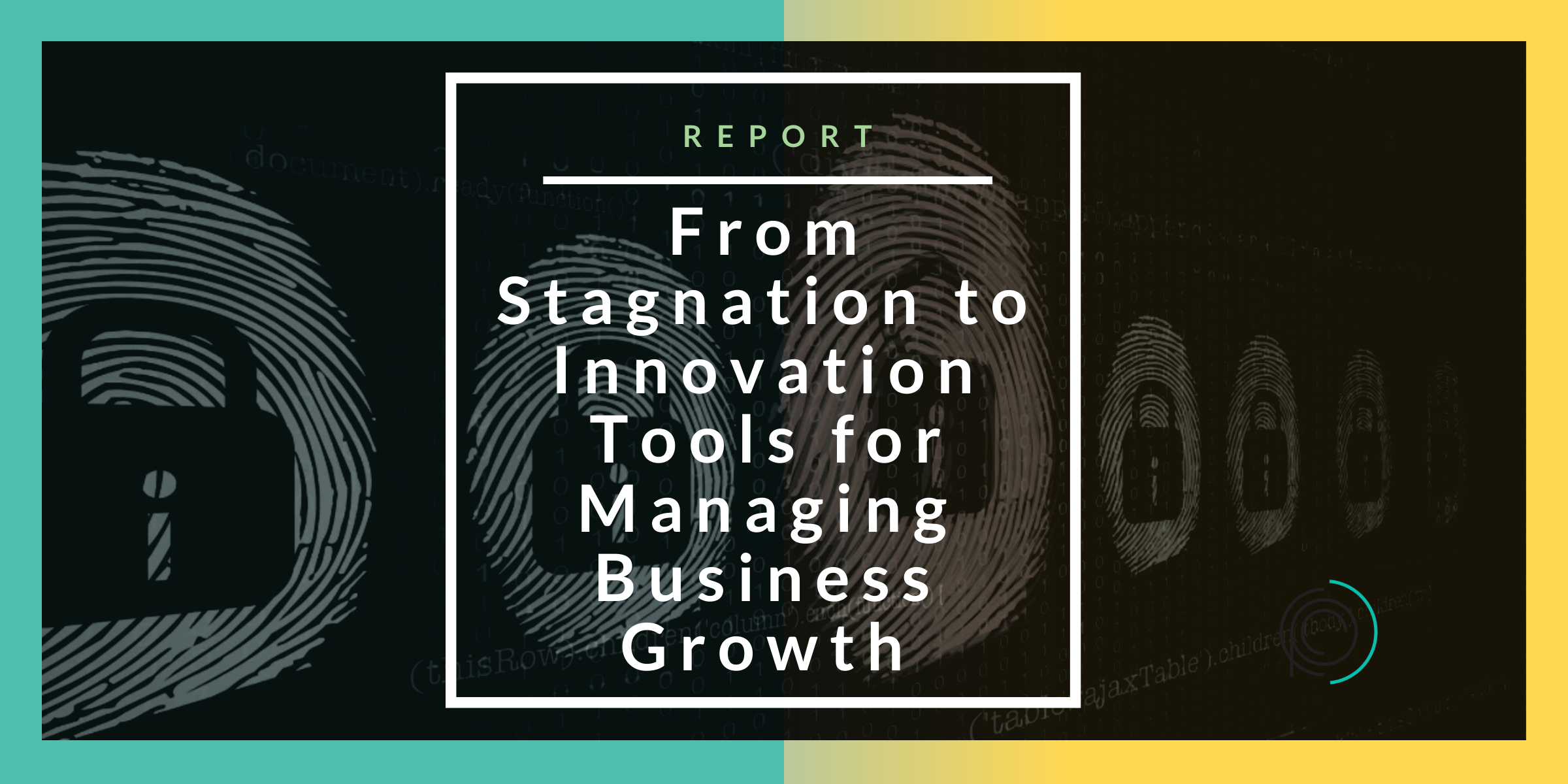Change is inevitable, but that doesn’t mean it’s easy, especially in a business context. Whether it’s adopting new technologies, restructuring departments, or shifting company culture, change often provokes fear and resistance. For business leaders, change managers, and senior managing directors, understanding how to identify and address pushback, impulsive responsiveness, and hesitation is crucial for smooth transitions and sustained growth. This article will guide you through recognizing these signs of resistance and offer practical steps to manage them effectively.
Why Fear of Change is a Business Challenge
Fear of change can cripple even the most successful organizations, hindering their ability to adapt and grow in an ever-evolving market. This fear isn’t merely about a reluctance to adopt new methods or technologies; it deeply stems from the psychological impact of uncertainty that permeates the workplace. Employees often find themselves anxious about job security, questioning whether their roles will remain relevant amidst new developments. They may also feel uncertain about their competency in mastering new systems, which can lead to a lack of confidence and decreased productivity. Additionally, the disruption of established routines can create an environment of chaos and discomfort, making it difficult for staff to feel anchored in their work. For leaders, recognizing and acknowledging this fear is the crucial first step toward effectively addressing it. By fostering an open dialogue, providing support, and offering training, leaders can help ease these concerns and create a more resilient and adaptive organization.
The Psychological Impact of Change
Change can trigger a survival instinct. When faced with uncertainty, people often experience anxiety, stress, and a feeling of loss of control. These emotions can lead to decreased productivity and morale, making it vital for leaders to address these feelings openly.
Resistance Manifested
Resistance can take various forms, from overt pushback to subtle hesitation. It’s essential to identify these signs early to mitigate their impact. Understanding the root cause of resistance can help in formulating effective strategies to counter it.
The Cost of Unmanaged Change
Ignoring the fear of change can have significant consequences. Projects may stall, turnover rates increase, and the company culture can become toxic. Business leaders must be proactive in managing change to avoid these pitfalls.
Identifying Pushback
Pushback is one of the most common reactions to change, manifesting in various forms within a team dynamic. It can be vocal, with team members openly expressing their concerns, or silent, where individuals may withdraw or show subtle signs of resistance. This resistance can also be direct, such as refusing to adopt new processes, or indirect, reflecting through decreased motivation or productivity. Recognizing pushback requires keen observation and a deep understanding of your team’s dynamics, as well as empathy to address their concerns effectively. By fostering an open dialogue and creating a supportive environment, leaders can help ease the transition and encourage a more positive response to change.
Vocal Opposition
Vocal opposition is the most apparent form of pushback within an organization. Employees may openly challenge new initiatives, question decisions made by leadership, or express their dissatisfaction with changes in policies or procedures. This type of dissent can manifest in team meetings, through emails, or even in casual conversations among colleagues. While vocal opposition can be disruptive and create tension in the workplace, it also presents a valuable opportunity for constructive dialogue. Engaging with employees who voice their concerns can lead to deeper understanding, foster collaboration, and ultimately result in more effective solutions that consider diverse perspectives. By addressing these challenges head-on, organizations can cultivate a culture of openness and continuous improvement.
Silent Rebellion
Silent rebellion is often more insidious than overt dissent. Employees might outwardly agree to changes implemented by management, yet internally they may harbor resistance, subtly sabotaging initiatives and efforts from within the organization. This form of pushback can manifest in various ways, such as decreased engagement, lack of cooperation, or even passive-aggressive behaviors. It requires leaders to look beyond mere words and carefully monitor the actions and attitudes of their teams. By fostering open communication and creating an environment where employees feel safe to express their concerns, leaders can better identify underlying issues and address them before they escalate, ultimately promoting a healthier workplace culture.
Passive-Aggressive Behavior
Passive-aggressive behavior is a nuanced and often subtle form of pushback that can be challenging to identify in the workplace. Employees may outwardly comply with new directives set by management, yet their performance may fall short of expectations or they might deliberately delay tasks, demonstrating their resistance in a less direct manner. This behavior can stem from various factors, including a lack of understanding of the changes, frustration with the new policies, or even personal issues affecting their motivation. Addressing passive-aggressive behavior requires a careful balance of empathy and firmness; leaders need to engage in open conversations to understand the underlying issues while also setting clear expectations and consequences for performance. By fostering an environment of trust and communication, organizations can mitigate the effects of this behavior and encourage more constructive engagement.
Impulsive Responsiveness to Change
Impulsive responsiveness is another common reaction to change that can significantly impact organizational dynamics. Unlike pushback, which reflects a more cautious and skeptical approach, impulsive responsiveness involves a hasty acceptance of new initiatives without taking the time to fully understand their implications or potential consequences. This rushed acceptance can lead to poorly informed decisions and a lack of alignment within the team. Just as resistance can hinder progress, impulsive responsiveness can be equally detrimental, as it may result in the implementation of initiatives that are not well thought out or aligned with the organization’s goals. Consequently, it is essential for individuals and teams to strike a balance between cautious skepticism and informed acceptance when navigating change..
The Rush to Implement
Some employees might rush to implement changes in an effort to appear cooperative and demonstrate their willingness to adapt. However, this impulsive behavior can lead to mistakes and may cause them to overlook important details that could significantly impact the outcome. When changes are made hastily, critical aspects of the process might be neglected, resulting in inefficiencies or errors that could have been easily avoided. Therefore, it is essential for leaders to foster a balanced approach that encourages thorough consideration and planning before any implementation. By promoting open communication and thoughtful deliberation, leaders can help their teams navigate changes effectively while ensuring that all necessary elements are addressed.
Lack of Understanding
Rapid acceptance of new initiatives or changes within an organization often occurs without a thorough understanding of the underlying concepts. Employees may find themselves unaware of the full implications and potential impacts of these changes, which can ultimately result in poor execution and missed opportunities. To address this challenge, it is crucial to provide comprehensive training sessions that not only explain the change but also engage employees in discussions about its benefits and challenges. Additionally, offering ongoing resources, such as tutorials, workshops, and access to expert guidance, can significantly enhance employees’ understanding and confidence. By doing so, organizations can foster a more informed workforce that is better equipped to embrace change and execute effectively.
Burnout Risks
Impulsive responsiveness can also lead to significant burnout among employees. The constant pressure to adapt quickly to ever-changing demands can overwhelm individuals, ultimately affecting their mental health and overall productivity. When employees feel they must respond to challenges without sufficient time to think critically or recharge, it can lead to chronic stress and fatigue. Therefore, it is crucial for leaders to monitor workloads closely and implement measures that promote a healthy work-life balance. Offering support through resources such as mental health programs, regular check-ins, and opportunities for professional development can help mitigate these risks and foster a more productive and engaged workforce.
Recognizing Hesitation
Hesitation is a more passive form of resistance that can significantly hinder progress. It involves a reluctance to engage with new initiatives, often manifesting as procrastination or avoidance. This can stem from various factors, such as fear of failure, uncertainty about the outcome, or simply feeling overwhelmed by the demands of change. When individuals hesitate, they may find themselves stuck in a cycle of inaction, which can prevent them from seizing valuable opportunities for growth and innovation. Embracing new initiatives requires overcoming this hesitation and fostering a mindset that welcomes challenges as chances for development.
Signs of Hesitation
Hesitant employees often display behaviors such as delaying the start of their tasks, avoiding important meetings, or needing constant reminders to stay on track. These signs typically indicate a level of discomfort with the changes being implemented and highlight a potential struggle to adapt to new expectations or processes. This reluctance may stem from various factors, including fear of the unknown, lack of confidence in their abilities, or insufficient information about the changes. Recognizing these signs is crucial, as it signals a need for additional support, guidance, and communication to help them navigate the transition more smoothly and build their confidence in the new environment.
Root Causes of Hesitation
Understanding the root causes of hesitation is crucial for personal and professional growth. Hesitation can arise from various factors, including a lack of confidence, fear of failure, or insufficient resources to achieve one’s goals. For instance, when individuals doubt their abilities, they may hesitate to take risks or make decisions, hindering their progress. Similarly, the fear of failure can paralyze even the most talented individuals, preventing them from pursuing valuable opportunities. Moreover, inadequate resources—whether financial, informational, or emotional—can create barriers that lead to indecision. By identifying these underlying causes, leaders can implement targeted strategies to address them effectively, fostering a more confident and proactive environment for themselves and their teams. This proactive approach not only mitigates hesitation but also encourages a culture of resilience and growth.
Encouraging Engagement
To effectively combat hesitation within a team, leaders should prioritize fostering an environment characterized by open communication and unwavering support. This involves not only encouraging team members to ask questions and voice their concerns but also actively listening to their input. Providing clear and structured guidance on new initiatives can demystify processes and help employees understand their roles in times of change. Additionally, offering reassurance through regular check-ins and positive reinforcement can help hesitant employees feel more at ease and confident in their abilities to adapt. By creating a safe space for dialogue and support, leaders can empower their teams to embrace change with greater comfort and enthusiasm.
Strategies for Managing Resistance
Managing resistance to change requires a multifaceted approach. It involves understanding the root causes of resistance, fostering open communication, and implementing effective strategies to address concerns.
Open Communication
Open communication is vital for managing resistance. Leaders should create channels for feedback, encourage dialogue, and listen actively to employees’ concerns. Transparent communication builds trust and reduces fear.
Involvement and Ownership
Involving employees in the change process can reduce resistance. When employees feel they have a say in decisions, they are more likely to support changes. Encourage participation and ownership to foster a collaborative environment.
Training and Support
Providing adequate training and support is crucial. Employees need to feel confident in their ability to adapt to new systems and processes. Offer comprehensive training programs and ongoing support to ease the transition.
Building a Culture of Adaptability
A culture of adaptability is essential for long-term success in today’s rapidly changing environment. It involves fostering a mindset that not only embraces change but actively seeks it out as an opportunity for growth rather than perceiving it as a threat. Organizations that encourage their teams to be flexible and open-minded create an atmosphere where innovation flourishes. This adaptability allows individuals to pivot quickly in response to new challenges, learn from experiences, and continuously improve their processes. By cultivating such a culture, businesses position themselves to thrive in the face of uncertainty and maintain a competitive edge in their industries.
Encouraging Innovation
Encouraging innovation is a key component of adaptability. Leaders should create an environment where new ideas are welcomed and experimentation is encouraged. This mindset helps employees view change positively.
Celebrating Successes
Celebrating successes, no matter how small plays a crucial role in reinforcing the positive benefits of change within an organization. When we take the time to acknowledge and reward employees’ efforts to adapt and innovate, we create a culture of appreciation that fosters motivation. Recognizing their hard work not only boosts morale but also encourages continued engagement and creativity. By highlighting these achievements, we inspire others to embrace new challenges and contribute to a thriving workplace environment. Furthermore, celebrating these milestones can lead to stronger team dynamics and a shared sense of purpose among all employees.
Continuous Learning
Promoting continuous learning is essential in today’s rapidly changing work environment, as it helps employees stay adaptable and responsive to new challenges. By encouraging professional development through training programs, workshops, and mentorship opportunities, organizations can empower their employees to enhance their skills and knowledge. Providing access to resources such as online courses and conferences further nurtures a culture of learning. This learning culture not only equips employees to handle future changes more effectively but also fosters innovation, collaboration, and job satisfaction, ultimately leading to a more resilient and competitive workforce.
Case Studies of Successful Change Management
Real-world examples can provide valuable insights into successful change management. Analyzing case studies of companies that have navigated change can offer practical lessons and inspiration.
Company A’s Digital Transformation
Company A successfully implemented a digital transformation by focusing on communication and training. They provided extensive resources and created a platform for anonymous or optional identification feedback, ensuring employees felt supported throughout the process.
Company B’s Restructuring Initiative
Company B’s restructuring initiative faced significant resistance initially. By involving employees in decision-making and fostering a culture of transparency, they managed to turn skepticism into support and cleared up job insecurity among the team.
Company C’s Shift to Remote Work
Company C’s shift to remote work during the pandemic highlighted the importance of flexibility and support. They offered resources for remote work setup, provided mental health support, and maintained regular communication to keep employees engaged.
The Role of Leadership in Change Management
Leadership plays a pivotal role in managing change within any organization. Effective leaders not only inspire confidence among their team members but also provide clear direction during times of uncertainty. They communicate a compelling vision that helps everyone understand the reasons behind the change and the benefits it can bring. Moreover, strong leaders actively support their teams through transitions by listening to their concerns, offering resources, and fostering a collaborative environment. This support is crucial in helping team members navigate the challenges that come with change, ultimately leading to a more resilient and adaptable organization.
Leading by Example
Leaders should lead by example, showcasing adaptability and maintaining a positive attitude toward change. This means not only embracing new ideas and processes but also communicating the benefits of these changes to their teams. When leaders model the behaviors they expect, such as being open to feedback and willing to adjust strategies, employees are more likely to follow suit. This creates a culture of trust and collaboration, where team members feel empowered to innovate and respond to challenges with confidence. By demonstrating resilience and a proactive mindset, leaders inspire their teams to navigate change effectively and contribute to the organization’s overall success.
Providing Clear Vision
A clear vision is essential for successful change management within any organization. Leaders must not only articulate the reasons for change but also communicate the specific benefits it will bring to both the team and the organization as a whole. By providing a detailed explanation of how the change aligns with the company’s long-term goals, leaders can foster a sense of ownership among employees. A compelling vision goes beyond mere words; it helps employees understand the purpose behind the change, inspiring them to embrace new initiatives and work collaboratively towards a common goal. This clarity can significantly reduce resistance and increase engagement throughout the transition process.
Offering Support and Resources
Leaders should offer the necessary support and resources to help employees adapt to changes in the workplace. This includes providing comprehensive training programs tailored to the specific needs of employees, addressing any concerns they may have through open communication channels, and offering reassurance during times of uncertainty. By actively engaging with their teams and being approachable, leaders can create an atmosphere of trust and collaboration. Supportive leadership not only fosters a positive change environment but also empowers employees to embrace new challenges, enhancing overall morale and productivity within the organization.
The Future of Change Management
The future of change management will be significantly shaped by rapid technological advancements and the continuously evolving business landscapes. As organizations adapt to new tools and methodologies, it will be essential for leaders to stay ahead of these trends to effectively guide their teams through transitions. Embracing innovative technologies such as artificial intelligence, data analytics, and cloud computing can enhance change management strategies, making them more efficient and responsive. By understanding these shifts and fostering a culture of agility, leaders can ensure their organizations not only survive but thrive in an increasingly dynamic environment.
Technological Innovations
Technological innovations will undoubtedly continue to drive significant change across various industries. As new tools and systems emerge, leaders must remain well-informed about these advancements and their potential impact on their organizations. This includes understanding how these technologies can enhance efficiency, improve customer experiences, and create new opportunities for growth. Proactive adaptation to technology is key, as it enables organizations to stay competitive and relevant in an ever-evolving landscape. By fostering a culture of innovation and encouraging team members to embrace new technologies, leaders can ensure their organizations are prepared to leverage these changes for long-term success.
Evolving Work Environments
The future work environment is expected to be significantly more flexible and dynamic than ever before. With the rise of technology and changing workforce expectations, leaders must be prepared to manage remote teams, hybrid work models, and other evolving work arrangements effectively. This involves not only understanding the tools and technologies that facilitate remote collaboration but also fostering a culture of communication and trust among team members. Additionally, leaders should prioritize employee well-being and engagement, ensuring that everyone feels connected and valued, regardless of their physical location. Embracing these changes will be crucial for organizations aiming to thrive in the new landscape of work.
Continuous Improvement
Continuous improvement will be a hallmark of successful change management in any organization. Leaders play a critical role in this process by fostering a culture that emphasizes ongoing evaluation and refinement of processes, strategies, and outcomes. This involves not only regular feedback loops and assessments but also encouraging team members at all levels to contribute their insights and suggestions for enhancement. By prioritizing continuous improvement, organizations can ensure they remain agile and competitive in an ever-evolving marketplace, adapting swiftly to new challenges and opportunities while consistently striving for excellence in their operations.
Conclusion
Fear of change is a natural human response, but it doesn’t have to hinder business progress. By understanding and addressing pushback, impulsive responsiveness, and hesitation, business leaders can foster a culture of adaptability and resilience. Open communication, involvement, training, and support are key strategies for managing change effectively. Remember, successful change management starts with strong leadership and a clear vision. Stay proactive, stay adaptable, and lead your organization confidently into the future.
For more insights and resources on managing change in your organization, connect with our team of experts today. Together, we can turn challenges into opportunities for growth.







